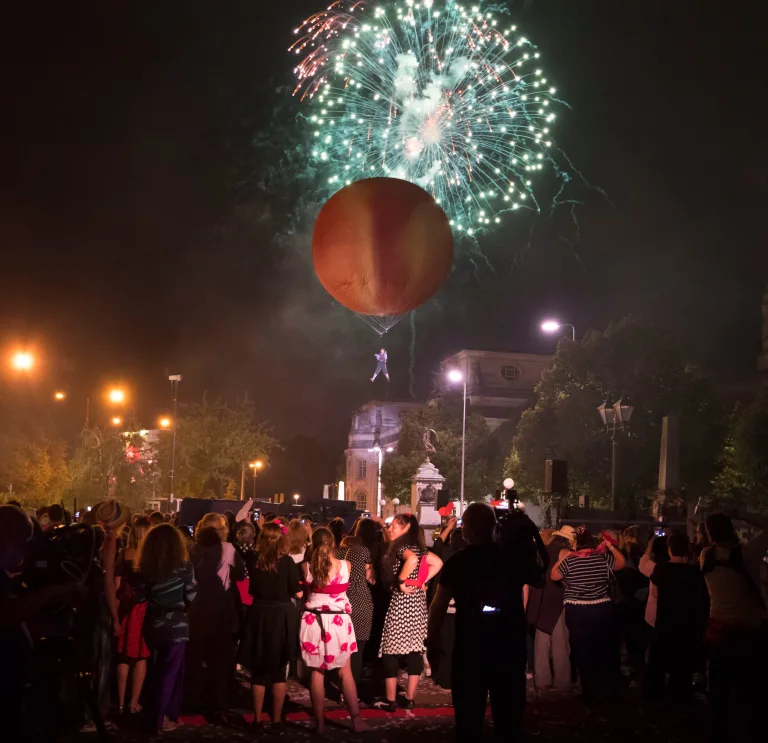Home is where the heart is
Cardiff was the focal point for Dahl’s early life. His Oslo-born father, Harald, came to the Welsh capital to seek his fortune in the late 19th century iron making and coal-mining boom.
Harald made enough money in shipping to build his own substantial home, Villa Marie on Fairwater Road, where Roald was born in 1916. The house has since been renamed Ty Gwyn, but it’s marked by a blue plaque on the garden wall. A year later the family moved to a country estate in nearby Radyr called Ty Mynydd. Harald died in 1920 – he’s buried in St John’s Church in Danescourt – and his widow and six children moved again to Cumberland Lodge in Llandaff, where they lived from 1921 to 1927. This is now the nursery of Howell’s School, where another blue plaque celebrates the Dahl connection.

Bluebird ’til I die
At Cumberland Lodge, Dahl struck up a close bond with the family’s gardener, an ex-miner called Jones, known to the children as Joss Spivvis.
Dahl later wrote, ‘I adored him. I worshipped him, and whenever I was not at school, I used to follow him around and watch him at his work and listen to him talk. Endless stories about his young days Joss would tell me as I followed him round the garden.
‘One of his favourite subjects was the Cardiff City football team, and I was very quickly swept along by his enthusiasm for those heroes of the turf. Every Saturday afternoon, rain or hail or snow or sleet, Joss and I would go to Ninian Park to see the City play.’
It’s been speculated that Joss’ tales of descending by cage into a mine shaft inspired the great glass elevator in the Willy Wonka stories, and even that the Oompa-Loompas, singing as they worked, were inspired by Welsh miners.
A sweet shop and cathedral
From autumn 1923 Dahl went to the Cathedral School in Llandaff, situated in the shadow of the towering Gothic cathedral. And it was here, aged just seven years old, that he developed his sense of mischief while admiring the sherbert suckers and tonsil ticklers at the sweet shop on the High Street (yes – another blue plaque).
Roald Dahl, Boy: Tales of ChildhoodA small, skinny old hag with a moustache on her upper lip and a mouth as sour as a green gooseberry."
Dahl recounts the legendary Great Mouse Plot, a scheme to leave a dead mouse in a jar of gobstoppers to frighten the miseryguts proprietor, in his first autobiography, Boy: Tales of Childhood. ‘Mrs Pratchett,’ he writes, ‘was a small, skinny old hag with a moustache on her upper lip and a mouth as sour as a green gooseberry.’
The plot worked perfectly… until, that is, Mrs Pratchett reported the boys to the school and Dahl was punished with a caning.


A day in the bay
In Harald Dahl’s day, Cardiff was the world’s greatest coal-exporting port, and two-thirds of coal was carried by Norwegian-owned ships. The family regularly attended the Norwegian Church, established in 1868 by the Norwegian Seamen’s Mission, and the young Roald was christened here in 1916. Today the building is the Norwegian Church Arts Centre and the nearby Oval Basin in Cardiff Bay has been reverentially renamed Roald Dahl Plass.

At the age of nine, Dahl set out for boarding school in Weston-super-Mare, Somerset. He would travel on an old steamer ship from Cardiff Docks and suffered from terrible homesickness for his house and family in Wales. During his first term he faked a remarkably accurate appendicitis and was sent home across the Bristol Channel. But even the master storyteller couldn’t get away with it every time; a kindly doctor let him have a couple of days at home before the boy had to return to school.

Holidays and donkey rides
The Dahl family holidayed each Easter in the stately Pembrokeshire resort of Tenby. ‘We adored Tenby’, he wrote. ‘We had donkey rides on the beach and long walks with the dogs along the top of the cliffs opposite Caldey Island, and there were primroses everywhere. We hunted for winkles on the rocks and carried them home and boiled them and got them out of their shells with bent pins and put them on bread and butter for tea.'
Roald DahlAn Easter holidays is hardly an Easter holidays without Tenby."
The family stayed in the same property, The Cabin, every year, a tradition Dahl continued with his own children. In a 1933 letter, he wrote, ‘An Easter holidays is hardly an Easter holidays without Tenby.’ The Grade I-listed property remains in the ownership of the Dahl family.


The music of poetry
Dahl also holidayed in Laugharne, Carmarthenshire, where he visited Dylan Thomas’s writing shed on the estuary. The tiny shed inspired him to build his own writing hut at his home in the Buckinghamshire village of Great Missenden. Dahl was a great admirer of Dylan Thomas’s work. In a 1970 interview, Dahl revealed that hearing Thomas read his own poetry was ‘the most beautiful thing you’ve ever heard’.
Roald DahlThe most beautiful thing you’ve ever heard."
Dahl even included the poem In Country Sleep in his much-loved story, Matilda. As the little girl accompanies her teacher, Miss Honey, home for tea, they pause at the garden gate, and Miss Honey tells her that ‘… a poet called Dylan Thomas once wrote some lines that I think of every time I walk up this path,’ before reciting the opening stanza, ‘Never and never, my girl riding far and near / In the land of the hearthstone tales, and spelled asleep.’ Matilda whispers, ‘It’s like music.’ Miss Honey responds, ‘It is music.’






